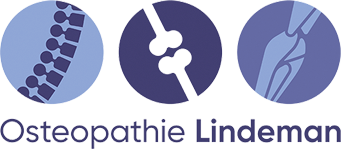By Remco Lindeman, DO. 19-03-2025
Introduction
Morphodynamic osteopathy, rooted in embryological development, offers a unique perspective on the relationship between physical structures, visceral function, and consciousness. In The Emotional Landscape in the Osteopathic Field, Patrick van der Heede emphasizes a bottom-up approach, where the integrity of fascial and visceral structures plays a crucial role in our emotional and cognitive states. This essay explores why maintaining optimal fascial and visceral structures is essential for both emotional resilience and deeper consciousness, supported by recent literature from osteopathy, embryology, psychology, neuroscience, and paleontology.
The embryological blueprint of movement and perception
Embryology is not just the study of early human development but a blueprint of potential that continues to influence our physical and emotional functioning. From the moment of conception, the body organizes itself through dynamic movement patterns—spiraling, expanding, folding—creating functional connectivity between organs, fascia, and the nervous system. These primordial movements are not merely mechanical but carry an inherent intelligence that persists throughout life (Blechschmidt, 2004).
Osteopaths working with morphodynamic principles recognize that restrictions in visceral and fascial mobility disrupt this original blueprint, leading to dysfunctions that manifest physically, cognitively, and emotionally. When these natural movements are limited, the body compensates, reinforcing patterns of emotional and postural imbalance (Van der Wal, 2009). These principles are also supported by evolutionary biology, where studies indicate that structural changes in connective tissues and neural pathways contribute to the development of higher cognitive functions (Lieberman, 2011).
The fascial network: A sensory organ for emotion and awareness
According to Patrick van der Heede’s bottom-up approach, true healing does not begin at the mental level but within the deep fascial and visceral structures. Fascia, an extensive connective tissue network, is more than just a structural component—it is a primary sensory organ that continuously informs the nervous system about the body’s internal state (Schleip et al., 2012).
The role of fascia in emotional processing and body-oriented therapies
- Fascia contains a vast number of proprioceptors and interoceptors, making it essential for body awareness (Stillwell, 1957).
- Emotional experiences, especially trauma and stress, are stored within fascial structures, influencing self-perception and environmental interactions (Levine, 1997).
- Restrictions in fascia limit autonomic nervous system adaptability, leading to emotional dysregulation and chronic tension patterns (Porges, 2011).
- Neuroscientific research suggests that connective tissue communication affects the limbic system, the brain area responsible for emotional processing (Craig, 2015).
- Body-oriented psychotherapies such as somatic experiencing (Levine, 1997) and bioenergetics (Lowen, 1975) demonstrate that physical tension in connective tissue is directly linked to unresolved emotional trauma and how body awareness can aid emotional healing.
Osteopathic techniques that restore fascial mobility facilitate the release of stored emotional tension, leading to shifts in both body awareness and cognitive perception (Barral, 2005).

Visceral osteopathy: The emotional memory of organs
Beyond the fascial system, each organ carries its own emotional resonance. The gut, liver, lungs, and heart all dynamically respond to emotional states.
- The gut-brain axis demonstrates how visceral functions shape emotional states, influencing anxiety, resilience, and mood (Mayer, 2016).
- The liver and diaphragm, crucial in detoxification and breath control, directly respond to emotional suppression and tension (Chaitow, 2005).
- Cardiac motility and cranial fluid dynamics influence the sense of safety, openness, and connection to oneself and others (Van der Wal, 2017).
- Evolutionary studies suggest that changes in neural-vascular structures in early primates may have played a role in expanding cognitive and emotional capacities (Deacon, 1997).
The need for research on the role of visceral fascia in emotion regulation
Recent research has suggested a possible link between connective tissue disorders and emotional dysregulation. A systematic literature review published in the Tijdschrift voor Psychiatrie (2022) reported that patients with hereditary connective tissue disorders, such as Ehlers-Danlos syndrome, show a higher prevalence of depressive and anxiety disorders. The prevalence of major depressive symptoms ranged from 7% to 98%, and anxiety symptoms from 4% to 94%, depending on the study population. These findings suggest a potential link between connective tissue structures and emotional health and highlight the need for further research into the role of visceral fascia in emotion regulation.
Osteopathy as a gateway to consciousness expansion
The morphodynamic osteopathic approach does not merely aim for pain relief or the correction of mechanical dysfunctions; it strives to restore the deep rhythms of life that regulate the nervous system (Van der Heede, 2023). When the body regains access to fluid, unrestricted movement, the nervous system reorganizes itself, fostering greater adaptability, creativity, and emotional balance (Porges, 2011).
Conclusion
Understanding osteopathy through the lens of morphodynamic embryology reveals why maintaining the optimal function of visceral and fascial structures is fundamental to emotional well-being and consciousness development. Patrick van der Heede’s bottom-up approach teaches us that true healing does not arise solely from cognitive processing but through restoring the original embryological movement patterns that regulate our physical and emotional functioning. By unlocking these innate rhythms, osteopathy becomes not only a therapeutic intervention but a pathway to deeper self-awareness and transformation.
References
- Barral, J. P., & Mercier, P. (1988). Visceral Manipulation. Eastland Press.
- Barral, J. P. (2005). Urogenital Manipulation. Churchill Livingstone.
- Blechschmidt, E. (2004). The Ontogenetic Basis of Human Anatomy: A Biodynamic Approach to Development from Conception to Birth. North Atlantic Books.
- Chaitow, L. (2005). Palpation and Assessment Skills. Churchill Livingstone.
- Craig, A. D. (2015). How Do You Feel? An Interoceptive Moment with Your Neurobiological Self. Princeton University Press.
- Deacon, T. (1997). The Symbolic Species: The Co-Evolution of Language and the Brain. W. W. Norton & Company.
- Levine, P. (1997). Waking the Tiger: Healing Trauma. North Atlantic Books.
- Lowen, A. (1975). Bioenergetics: The Revolutionary Therapy That Uses the Language of the Body to Heal the Problems of the Mind. Penguin Books.
- Mayer, E. (2016). The Mind-Gut Connection. Harper Wave.
- Porges, S. W. (2011). The Polyvagal Theory. W. W. Norton & Company.
- Tijdschrift voor Psychiatrie. (2022). Depressive and Anxiety Symptoms in Hereditary Connective Tissue Disorders: Case Study and Systematic Literature Review. Retrieved from www.tijdschriftvoorpsychiatrie.nl
- Van der Heede, P. (2020). The Emotional Landscape in the Osteopathic Field. Osteopathy & Mind Publications.
- Van der Heede, P. (2023). Osteopathic Medicine. Holonomic Keys for Treatment. Osteopathy & Mind Publications.



